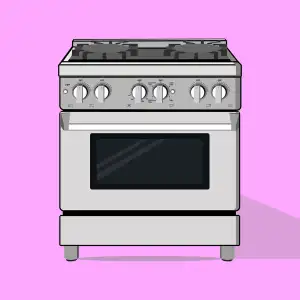Mastering the Art of Cooking: A Beginner's Guide on How to Use a Convection Oven at Home

Convection ovens are a popular choice among home cooks for their efficient and even cooking capabilities. Unlike conventional ovens, convection ovens have a fan that circulates hot air around the food, allowing for faster and more uniform cooking. This circulating air helps to eliminate cold spots and ensures that food is cooked evenly from all sides. Convection ovens can be used for baking, roasting, and even broiling, making them versatile appliances in the kitchen. By understanding how to properly use a convection oven, you can elevate your cooking skills and create delicious meals with ease.
Preheating the Convection Oven
Preheating your convection oven is crucial to ensure even cooking and optimal results. Unlike traditional ovens, convection ovens require less preheating time due to their efficient air circulation system. To preheat, simply set the oven to the desired temperature and allow it to heat up for about 5-10 minutes. This ensures that the oven reaches the correct temperature for your recipe, allowing your food to cook evenly and thoroughly. Always follow the manufacturer's instructions for preheating times and temperatures to achieve the best cooking outcomes.
Adjusting Cooking Time and Temperature
Adjusting cooking time and temperature is crucial when using a convection oven. Typically, you should reduce the temperature by 25 degrees Fahrenheit compared to a conventional oven and keep an eye on your food as it cooks faster in a convection oven. It's recommended to start checking for doneness about three-quarters of the way through the original recipe's suggested cooking time. This adjustment ensures that your food doesn't overcook or burn due to the increased efficiency of convection ovens.
Placement of Cookware in the Oven
When using a convection oven, it is crucial to place your cookware correctly for optimal cooking results. To ensure even airflow around the food, use shallow and light-colored pans. Avoid covering the oven racks with aluminum foil as it can disrupt the air circulation. Place the cookware in the center of the oven, leaving enough space between each dish to allow hot air to circulate efficiently. Additionally, avoid placing dishes too close to the oven walls as this can block airflow and result in uneven cooking. By following these placement guidelines, you can maximize the benefits of using a convection oven for your culinary creations.
Avoiding Overcrowding in the Oven
Avoiding Overcrowding in the Oven is crucial for ensuring that your food cooks evenly and thoroughly. When there are too many dishes in the oven at once, air circulation is restricted, leading to uneven cooking. To prevent this, make sure to leave enough space between items on the racks. This allows hot air to circulate freely around each dish, promoting even cooking. If you need to cook multiple dishes simultaneously, consider using multiple racks and rotating them halfway through the cooking process for optimal results.
Monitoring Food for Even Cooking
To ensure even cooking in a convection oven, it's essential to monitor your food throughout the cooking process. Rotate your dishes halfway through the cooking time to promote uniform browning and prevent any hot spots. Use an oven-safe thermometer to check the internal temperature of meats or baked goods for doneness. Avoid opening the oven door frequently, as this can disrupt the airflow and temperature consistency inside the oven, leading to uneven cooking. By staying vigilant and making these adjustments as needed, you can achieve perfectly cooked dishes every time with your convection oven.
Utilizing the Convection Fan Effectively
Utilizing the convection fan in your oven effectively is key to achieving optimal cooking results. The fan helps to circulate hot air evenly around the food, ensuring that it cooks uniformly. To make the most of this feature, avoid blocking the airflow by using shallow pans and placing them in the center of the oven. Additionally, refrain from covering food items with foil as it can disrupt the air circulation. By allowing the convection fan to work its magic, you'll enjoy dishes that are cooked to perfection every time.
Cleaning and Maintaining Your Convection Oven
Cleaning and maintaining your convection oven is essential to ensure its longevity and optimal performance. After each use, allow the oven to cool completely before cleaning. Remove any spills or food debris with a damp cloth or sponge. For stubborn stains, use a mild detergent or oven cleaner recommended for your specific oven type. Regularly check and clean the convection fan to prevent buildup of grease and dirt, which can affect its efficiency. Additionally, inspect the door seal for any signs of wear and tear, as a tight seal is crucial for proper heat retention. Lastly, refer to the manufacturer's instructions for detailed cleaning guidelines and schedule regular maintenance checks to keep your convection oven in top condition.
Published: 26. 04. 2024
Category: Home



